Carbon fiber began to develop during the Cold War between the United States and the Soviet Union in the 1960s. It has excellent properties such as light weight, high strength, high modulus, high pressure resistance, ablation resistance and small deformation. or wrapping. More than 90% of carbon fiber will be used in combination with resin, metal, ceramics, etc. The carbon fiber board is pre-impregnated with resin reinforcement and then hot-pressed. Here I will tell you about the machining technology of carbon fiber board.
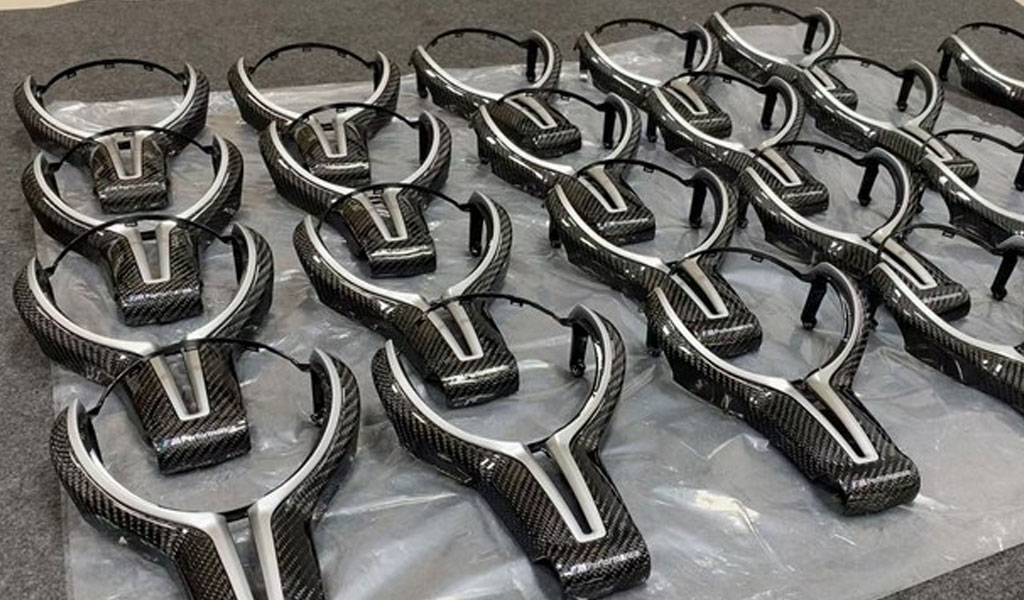
With the development of science and technology, our performance requirements for products are getting higher and higher. Carbon fiber composite materials have replaced metal materials in many fields, which can meet the demand very well and have also been vigorously promoted.
Here, carbon fiber composite materials, Domestic production and machining have gradually caught up with Europe and the United States. What is the china cnc machining technology of carbon fiber composite products? What are the machining difficulties? Many friends are not very clear. The editor of Be-Cu.com Let me tell you about it in the following article.
There are five main machining techniques for carbon fiber composite materials: milling, grinding, ultrasonic vibration machining, turning and drilling. When it comes to a specific carbon fiber composite product, what kind of machining method is used depends on our requirements for the product. Sometimes, the machining method of carbon fiber composite products will also use a variety of machining methods, but there is no escape. There are five such machining techniques. The following is a detailed explanation.
Precision CNC Milling For Carbon Fiber
Milling is usually a machining method for reprocessing finished workpieces. It requires high machining accuracy and is a repairable precision milling process after rough machining of complex workpieces. During the machining process, there is also a complex interaction between the end mill and CFRP, resulting in uncut fiber yarns and delamination in the CFRP workpiece. In order to reduce and avoid similar defects, as long as the cutting force and the occurrence of shaft delamination and uncut fiber yarn burrs are scientifically predicted in the early stages of machining, and the machining process parameter settings are controlled, the occurrence of burrs and burrs will be effectively reduced. produce.
The main process parameters, such as fiber orientation, axial and tangential feed speed, cutting speed, etc., will have a significant impact on the surface roughness of the workpiece. Technical requirements for milling: Repeated experiments on fiber orientation, axial and tangential feed speeds to form optimal parameters for milling.
Grinding For Carbon Fiber
Usually in shipbuilding, the quality requirements for CFRP workpieces are more stringent. The accuracy and quality of the workpiece require higher machining methods, and the construction technology of grinding machining exactly meets its micro manufacturing requirements. The accuracy requirements for grinding workpieces are very strict, and the rough-machined workpieces need to be finely ground. Grinding
CFRP is much more difficult and complex than metal. Domestic and foreign scholars have also conducted relevant research and designed a cup-shaped grinding wheel that provides coolant inside for grinding CFRP. They compared dry grinding and external coolant. Three machining methods of grinding and internal coolant grinding were used. The results showed that during the internal coolant grinding method, the matrix resin attached to the grinding wheel was significantly reduced, and the abrasive grains in the grinding wheel could grind the fibers more effectively and There will be no delamination or burrs on the material surface. This method of providing coolant inside the grinding wheel demonstrates a stronger cooling effect, can significantly reduce the grinding temperature, and is conducive to chip discharge.
Ultrasonic Vibration Machining Technology
The ultrasonic vibration machining mechanism is based on the relative movement of the tool and the workpiece during traditional machining, and then a certain amount of ultrasonic vibration is applied to both to produce composite materials with superior performance. This technology is an optimization and assistance of traditional technology.
Compared with traditional machining methods, the technology is more advanced and the surface quality of the finished workpiece is more delicate. It also reduces the occurrence of cracks and saves cnc machining costs.It effectively reduces the machining difficulty of CFRP reinforced composite materials. The application of ultrasonic waves completely improves the material removal mechanism, reduces the mutual friction between the tool and the workpiece, reduces the tool machining time, enhances the tool force, improves the machining efficiency, and reduces Tool wear makes the accuracy and quality of workpiece machining more advanced. Mainly include ultrasonic vibration drilling, ultrasonic vibration grinding, ultrasonic vibration milling, and ultrasonic vibration cutting.
Ultrasonic vibration machining will be beneficial to ultrasonic drilling and grinding respectively. For drilling machining, there will also be an explanation below.
CNC Turning For Carbon Fiber
Turning is the most commonly used method and the most basic method in the machining of carbon fiber reinforced composite materials (CFRP). It is usually suitable for realizing predetermined tolerances on cylindrical surfaces.
The main tool materials suitable for turning are: carbide or ceramics and polycrystalline diamond. In the cnc turning process, the feed rate, cutting depth, and cutting speed will all affect the surface quality of the finished workpiece and the degree of damage to the props. This is also the target direction for technical optimization.
CNC Drilling For Carbon Fiber
The workpiece requires drilling operations during bolt or riveting assembly. There are still certain problems during the CFRP drilling process: material delamination, severe tool loss, and quality issues with the inner wall of the hole. After experimental analysis, it was found that the set cutting parameters, the geometry of the drill bit and the quality of the cutting all have a significant impact on the problems raised. The maximum diameter of the damaged area and the ratio of the aperture are usually called the damage factor, which also indicates the degree of delamination. The larger the delamination factor, the more serious the delamination problem is.
It can be inferred through experiments that there is a relationship between thrust and delamination during the cutting process, and the magnitude of the cutting force can also indicate the degree of delamination. Based on the same drilling material, unlike other machining methods, the cutting rate during drilling does not have a great impact on the cutting force.
The above five are common machining techniques for our carbon fiber composite products, such as carbon fiber plates and tubes. It is in this way that they can be practically applied. The immature machining technology of many carbon fiber composite material manufacturers in China will also lead to poor application of carbon fiber composite materials. When choosing a carbon fiber composite material manufacturer, you must be strong in such basic skills. Everyone knows that Be-Cu.com is an excellent carbon fiber composite material machining manufacturer.
Why do many carbon fiber composite material manufacturers fail to achieve this? In fact, the reason is very simple. Carbon fiber composite material is a new composite material formed by fusing carbon fiber bundles and epoxy resin matrix. Only when its performance is better will it be It is widely used. In the actual production process, due to insufficient technology, it is easy to cause the carbon fiber lamination to be uneven, which will cause pulling out or separation of the matrix during the machining, causing the entire carbon fiber composite product to be scrapped. . In addition, carbon fiber composite materials have relatively good friction resistance and high temperature resistance, and also have very high requirements for machining tools. Many companies that have just entered the industry have insufficient experience in this area and are unable to meet customer requirements.
Carbon fiber sheets can be processed by traditional machining methods, such as turning, grinding, milling, cutting, drilling, etc. From these processes alone, it is not very complicated, but its strength is very high and its brittleness is very large. If the force applied during machining is too large, it is easy to be broken, and the applied force is too small and useless, so the machining technology and The choice of tool is very important.
Counterboring, chamfering, and threaded holes, different tools should be used for different machining requirements, and the most suitable method should be found by trial and error, and by controlling variables. In addition, environmental factors such as temperature and humidity may also affect machining.
Some carbon fiber board machining plants with low technical level and short establishment time often have some problems, such as sheet delamination and tearing; tool wear is too fast, increasing costs; improper use of tools leads to low dimensional accuracy of processed parts, and the use of Short lifespan. China Be-cu Prototype Material Technology Co., Ltd. has a professional R&D team composed of doctors and masters.
Years of practical production have allowed us to accumulate rich experience and good product quality. CSR, SAIC, Yuyue Medical, China Ordnance Industry Group and other domestic first-class enterprises have cooperated.Guess what you like: what are the regular sizes of carbon fiber panels
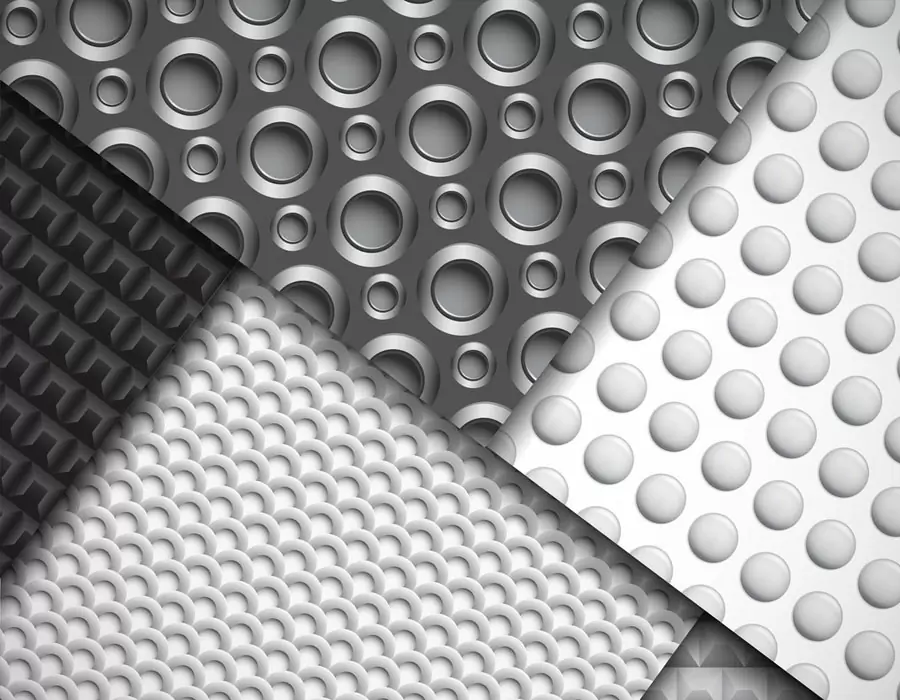
ISO 9001 certified. BE-CU Prototype Offering CNC machining carbon fiber and other manufacturing services for carbon fiber marterial. Various capabilities include notching, labeling, drilling carbon fiber, grinding, laser cutting carbon fiber, finishing, plating, marking, CNC milling carbon fiber and turning carbon fiber.We stock high quality 3k carbon fiber sheet in a variety of thickness, types and finish. Its a great material used in applications where light weight and strength are needed such as drones. Unlike other workshops, we have no min order and are often filling orders with a single part. We also don’t make you pay for the full sheet and you only get charged for what is used. With a large selection of material, you should find everything you need to make your project come to life. We are also able to handle larger production runs and provide a competitive pricing. If we don’t have the material or finish you require, we are more the willing to look at bringing it in for you.
What Is Carbon Fiber?Carbon fiber is made of polyacrylonitrile (PAN) (or pitch, viscose) and other organic fibers by carbonization (removal of most elements except carbon) by pyrolysis method under inert gas at high temperature above 1,000 °C. Inorganic polymer fibers with a carbon content of more than 90%.
-

3D Printing Continuous Fibres
-

3D Printing Short Fibre Filled Wires
-
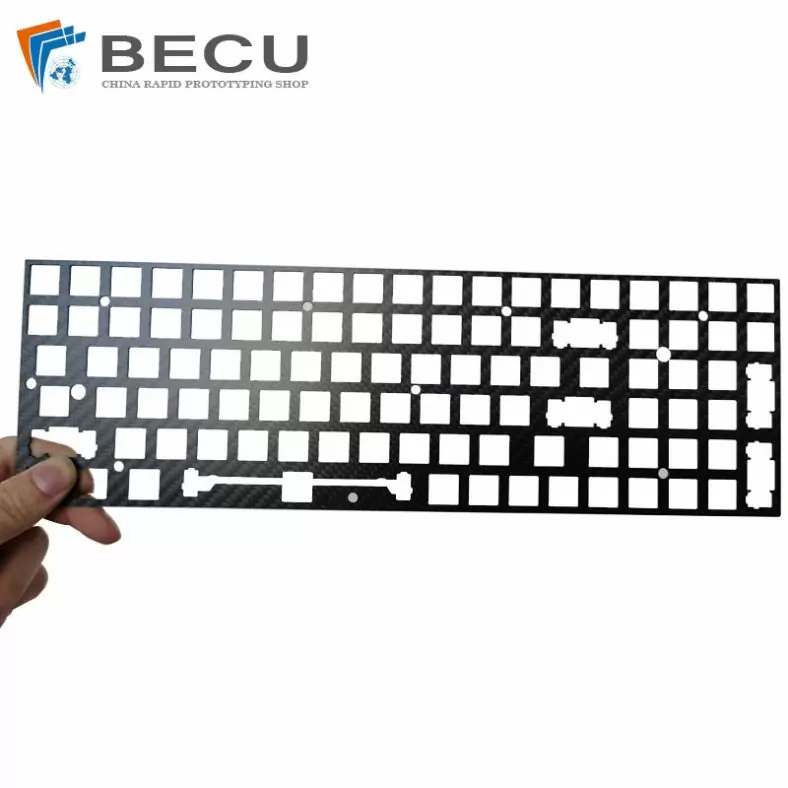
Laser Cutting Carbon Fiber Positioning Keyboard
-

Cnc Turning Industrial Copper-Aluminum Clad Carbon Fiber Machinery Parts
-
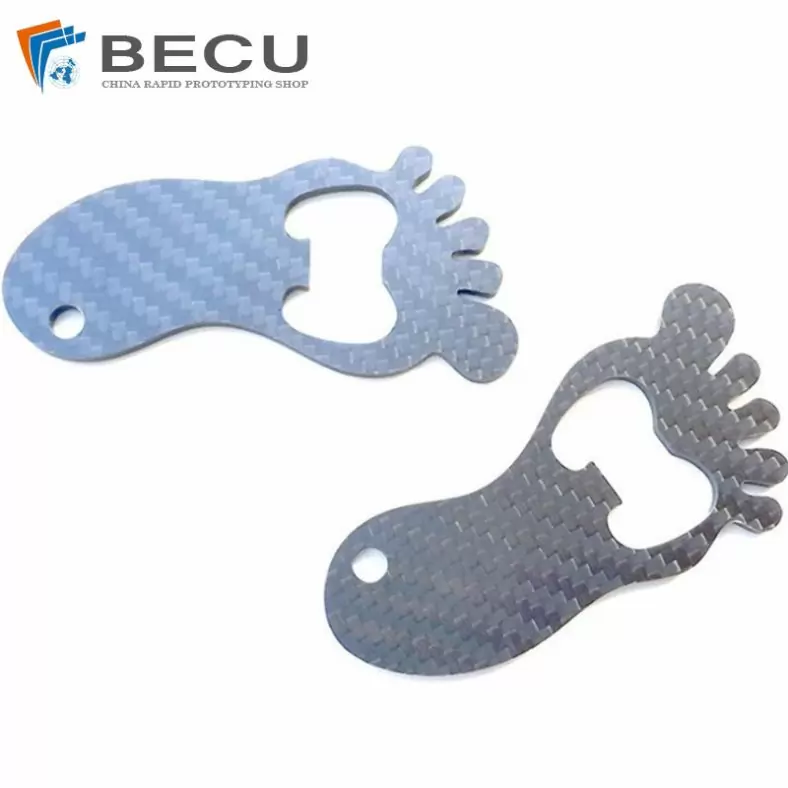
Carbon Fiber Luggage Tag Ornaments
-
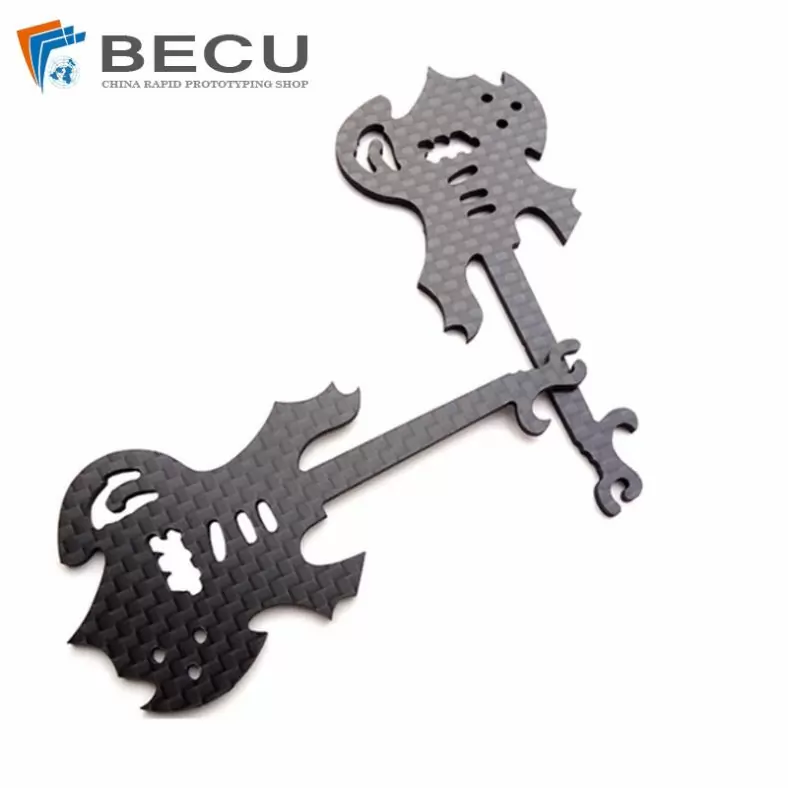
Laser Cutting Carbon Fiber Guitar Shape Crafts
-
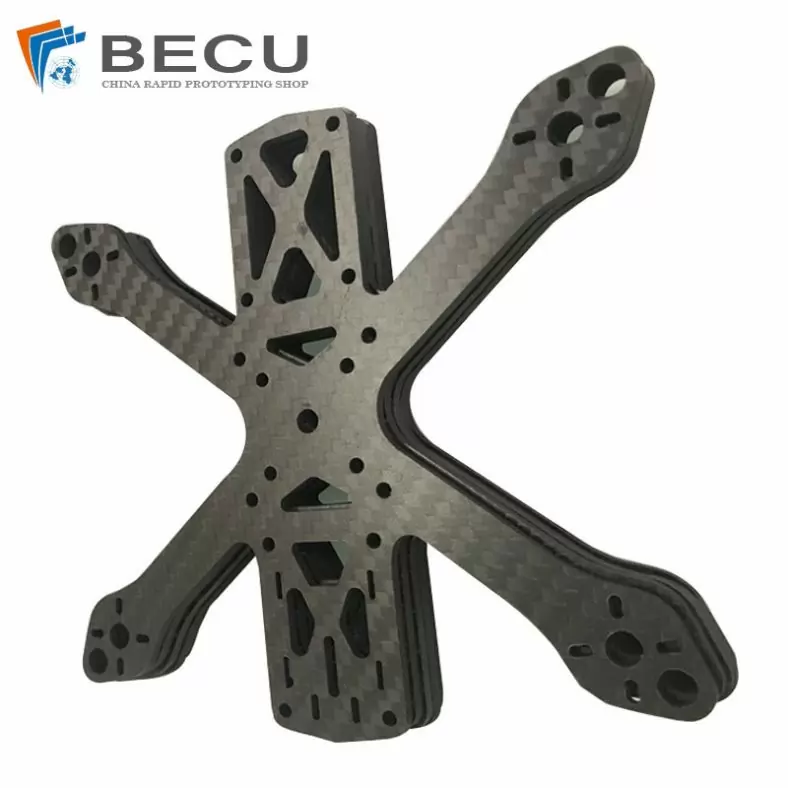
Laser Cutting Carbon Fiber Drone Rack
-
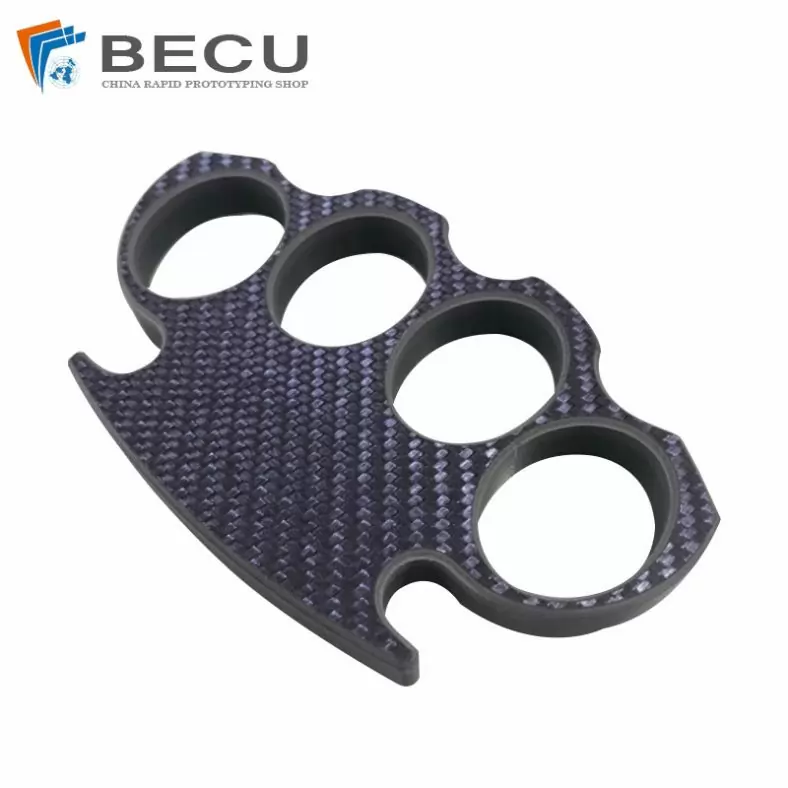
Cnc Milling Carbon Fiber Finger Buckle
